Ulun Danu Beratan Temple

Bali’s Iconic Lakeside Sanctuary

Ulun Danu Beratan Temple is Nestled on the shores of Lake Beratan in the mountainous region of Bedugul, Ulun Danu Beratan Temple is one of Bali’s most iconic and serene landmarks. This picturesque water temple, often seen gracing postcards and travel brochures, is renowned for its stunning setting, where the temple structures appear to float on the calm waters of the lake, framed by the misty peaks of the surrounding mountains. Ulun Danu Beratan is not only a site of exceptional natural beauty but also a place of deep spiritual significance for the Balinese people. In this article, we’ll explore the history, architecture, cultural importance, and visitor experience of Ulun Danu Beratan Temple.
1. The History of Ulun Danu Beratan Temple
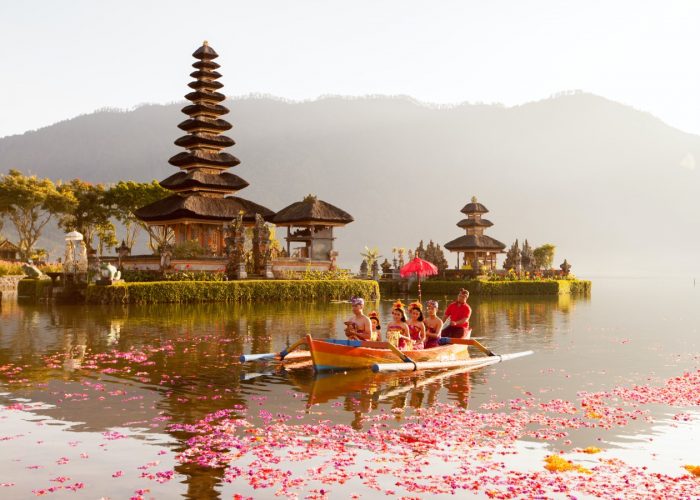
Ulun Danu Beratan Temple, also known as Pura Ulun Danu Beratan, was built in the 17th century during the reign of the Mengwi Kingdom. The temple is dedicated to Dewi Danu, the goddess of water, lakes, and rivers, who is believed to control the water supply for Bali’s rice fields and agriculture. The temple’s name, “Ulun Danu,” literally means “head of the lake,” reflecting its role as the primary source of water for the surrounding region.
The temple complex was constructed to honor and worship Dewi Danu and to seek her blessings for fertility, prosperity, and overall well-being. The Balinese people rely heavily on rice farming, and the success of their crops is closely tied to the water supplied by Lake Beratan and the other lakes in the Bedugul region. As such, Ulun Danu Beratan Temple has always been a vital spiritual site, where ceremonies and offerings are made to ensure the continued flow of water and the fertility of the land.
Over the centuries, the temple has been carefully maintained and preserved, and it continues to be an important place of worship for the Balinese. Despite the influx of tourists, Ulun Danu Beratan remains a sacred site, where traditional rituals and ceremonies are still regularly performed.
2. The Architecture and Design
Ulun Danu Beratan Temple is a complex of several smaller temples and shrines, each with its own unique architectural style and purpose. The most famous structure within the complex is the 11-tiered meru, a pagoda-like tower that rises gracefully from the waters of Lake Beratan. This meru is dedicated to Shiva and Parvati, two of the most important deities in Balinese Hinduism.
The temple complex is a stunning example of traditional Balinese architecture, characterized by its tiered roofs, intricate carvings, and harmonious integration with the natural environment. The temple structures are built on small islands that extend into the lake, creating the illusion that they are floating on the water. This design not only enhances the visual beauty of the temple but also symbolizes the close relationship between the Balinese people and the natural world.
The layout of Ulun Danu Beratan Temple is carefully planned to reflect the principles of Tri Hita Karana, the Balinese philosophy of harmony between humans, nature, and the divine. The temple is divided into three main areas:
- Outer Courtyard (Nista Mandala): The outermost area of the temple, where visitors enter. This courtyard is open and accessible, and it often hosts cultural performances and exhibitions.
- Middle Courtyard (Madya Mandala): The middle section of the temple, which is used for preparing offerings and ceremonies. This area is typically accessible to visitors, allowing them to observe the preparations for rituals.
- Inner Courtyard (Utama Mandala): The innermost and most sacred part of the temple, where the main shrines and merus are located. This area is reserved for worship and is often closed to the public, especially during religious ceremonies.
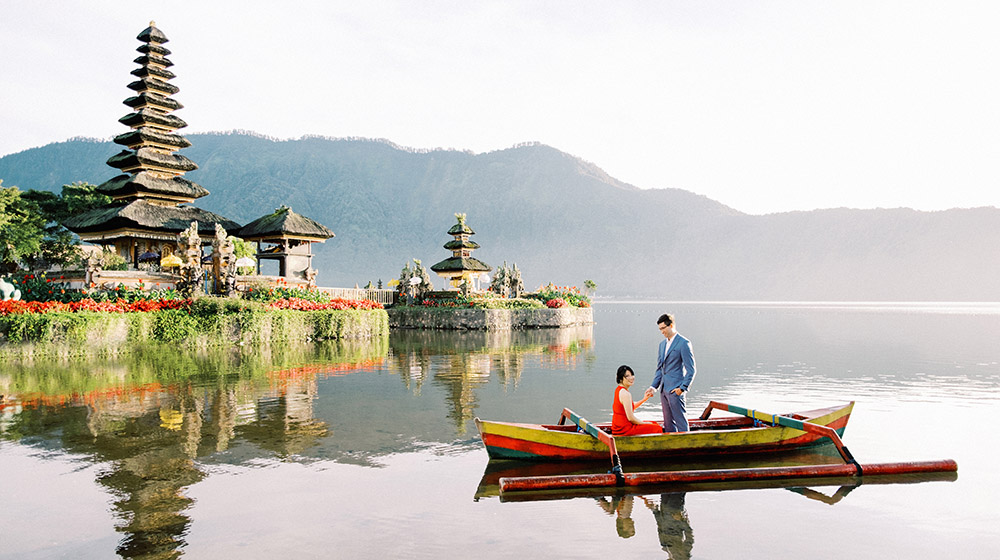
3. The Cultural Significance
Ulun Danu Beratan Temple holds immense cultural and spiritual significance for the Balinese people. As a water temple, it plays a crucial role in the island’s traditional subak irrigation system, which is a UNESCO World Heritage-listed practice that has been in place for centuries. The subak system is a cooperative water management system that ensures the fair and sustainable distribution of water for rice cultivation across Bali. Ulun Danu Beratan, as one of the primary water temples, is central to this system, and the rituals performed here are essential for maintaining the flow of water to the rice fields.
The temple is also a key site for religious ceremonies and festivals, particularly those related to agriculture and water. One of the most important ceremonies held at Ulun Danu Beratan is the Piodalan ceremony, which takes place every 210 days according to the Balinese calendar. During this ceremony, the temple is adorned with colorful decorations, and offerings are made to Dewi Danu to ask for her blessings and protection. The Piodalan ceremony is a vibrant and spiritually charged event that draws both locals and visitors to the temple.
In addition to its agricultural significance, Ulun Danu Beratan is also a place of pilgrimage for Balinese Hindus. Many people come to the temple to pray for fertility, prosperity, and good fortune, as well as to seek spiritual purification. The temple’s serene setting and sacred waters make it an ideal place for meditation and reflection.
4. The Experience of Visiting Ulun Danu Beratan
Visiting Ulun Danu Beratan Temple is a serene and enriching experience that allows visitors to connect with Bali’s cultural and spiritual heritage. The temple’s stunning location on the shores of Lake Beratan, surrounded by misty mountains and lush greenery, creates a tranquil atmosphere that is perfect for relaxation and contemplation.
- Arrival and Exploration: Upon arriving at the temple, visitors are greeted by the sight of the majestic merus rising from the lake. The temple grounds are beautifully landscaped, with manicured gardens, pathways, and statues that add to the overall charm of the site. Visitors can take a leisurely stroll around the temple complex, exploring the different shrines and enjoying the views of the lake and mountains.
- Boat Rides on Lake Beratan: One of the unique experiences offered at Ulun Danu Beratan is the opportunity to take a traditional wooden boat (jukung) ride on Lake Beratan. These boats, often brightly painted, allow visitors to get a closer view of the temple from the water and to experience the peacefulness of the lake. The boat rides are particularly popular during the early morning or late afternoon when the light is soft, and the mist adds a mystical quality to the scenery.
- Photography: Ulun Danu Beratan is one of the most photogenic sites in Bali, and it’s a favorite spot for photographers. The temple’s reflection in the still waters of the lake, combined with the backdrop of mountains and clouds, creates picture-perfect scenes. Early mornings often offer the best conditions for photography, with fewer crowds and a higher likelihood of capturing the temple shrouded in mist.
- Cultural Performances: Depending on the time of year and the temple’s calendar of events, visitors may have the chance to witness traditional Balinese dance and music performances in the outer courtyard. These performances, which are often part of religious ceremonies, provide insight into Bali’s rich cultural traditions and add to the overall experience of visiting the temple.
- Nearby Attractions: Ulun Danu Beratan is located in the Bedugul region, which is known for its cool climate, botanical gardens, and strawberry farms. After visiting the temple, visitors can explore the nearby Bali Botanic Garden, one of the largest botanical gardens in Indonesia, or visit the traditional market in Bedugul, where local produce and handicrafts are sold.
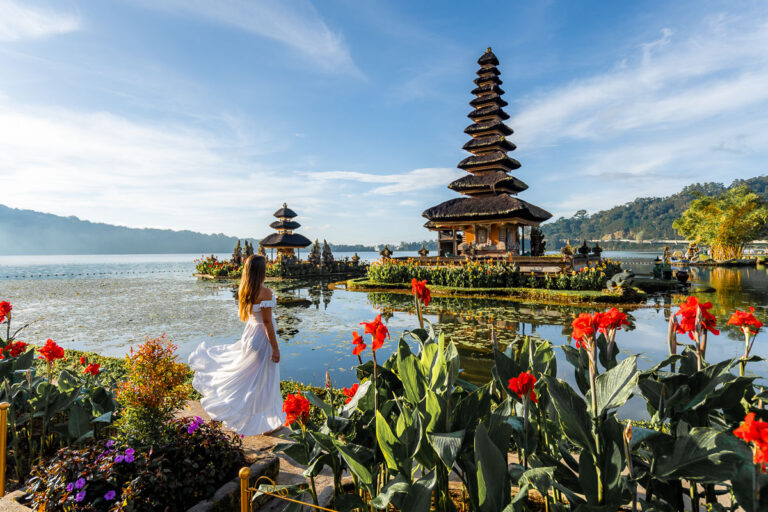
5. Practical Information for Visitors
To make the most of your visit to Ulun Danu Beratan Temple, here are some practical tips and information:
- Location: Ulun Danu Beratan Temple is located in the Bedugul region, in the Tabanan Regency of Bali. It is approximately 50 kilometers north of Denpasar and can be reached by car or scooter in about 1.5 to 2 hours, depending on traffic.
- Opening Hours: The temple is open daily from 7:00 AM to 7:00 PM. The best time to visit is in the early morning or late afternoon when the light is soft and the crowds are smaller.
- Entrance Fee: There is an entrance fee to visit the temple, which is used for the maintenance and preservation of the site. The fee is generally affordable, and additional fees may apply for boat rides on the lake.
- Dress Code: As with all temples in Bali, visitors are expected to dress modestly when visiting Ulun Danu Beratan. This means covering your shoulders and knees. Sarongs and sashes are often available for rent at the entrance if needed.
- Guided Tours: While it’s possible to explore the temple on your own, guided tours are available for those who want a deeper understanding of the temple’s history, architecture, and cultural significance. Local guides can provide valuable insights and make the visit more enriching.
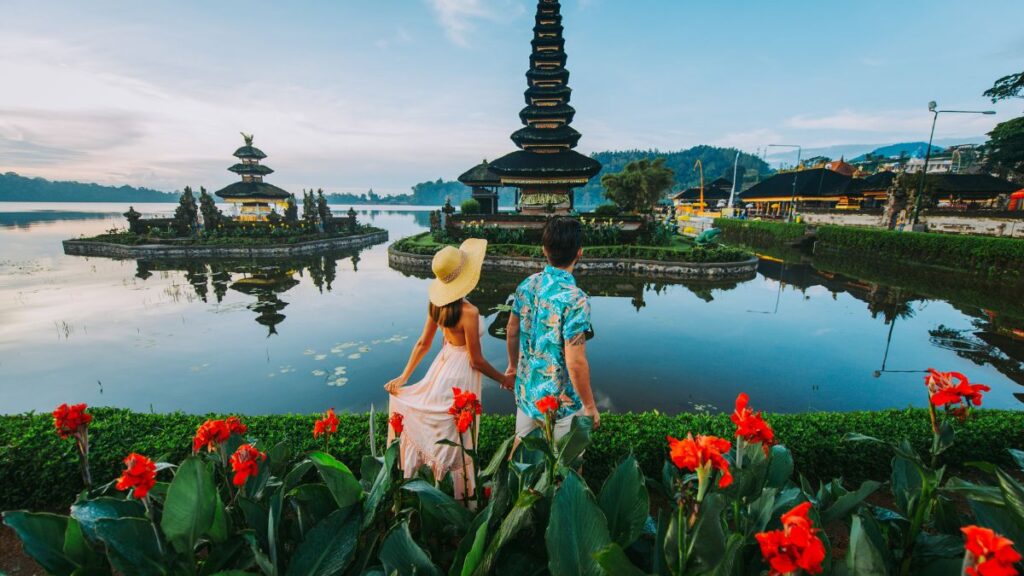
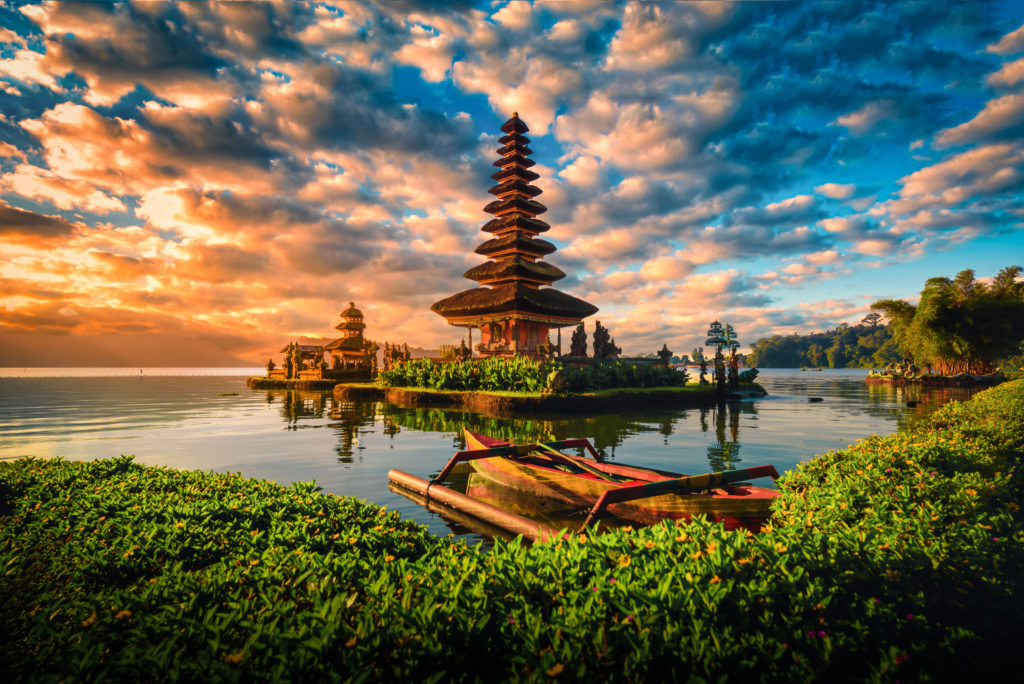
Conclusion: A Must-Visit Destination in Bali
Ulun Danu Beratan Temple is one of Bali’s most iconic and beloved landmarks, offering a unique combination of natural beauty, cultural heritage, and spiritual significance. Whether you’re seeking a peaceful retreat, a cultural experience, or simply a stunning place to take photos, Ulun Danu Beratan has something to offer every visitor. The temple’s serene setting on Lake Beratan, surrounded by mountains and greenery, creates a tranquil atmosphere that is perfect for reflection and relaxation. A visit to Ulun Danu Beratan is not only a journey into Bali’s past but also an opportunity to connect with the island’s enduring spiritual traditions.


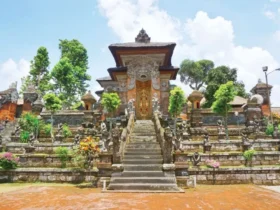

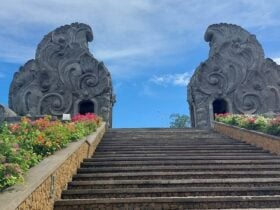
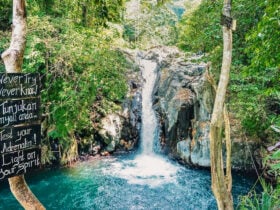




Leave a Review